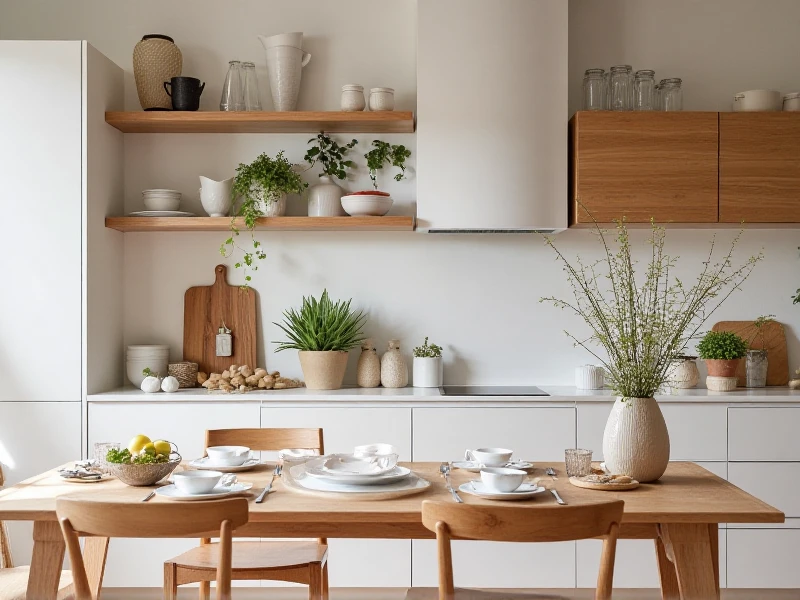Unlock Your Dream Space: Expert Tips for Choosing Furniture That Transforms Rooms
2025-06-08

Finding the perfect furniture is more than just filling a room; it's about creating an environment that reflects your personality, supports your daily life, and evokes genuine comfort. Whether you're furnishing your first apartment, revamping your forever home, or seeking a statement piece, navigating the world of sofas, tables, chairs, and cabinets can feel overwhelming. How do you choose pieces that look stunning and stand the test of time? By focusing on key aspects like purpose, quality, style, and comfort, you can transform any space into a sanctuary you love to inhabit.
Start with Purpose: Form Always Follows Function
Before falling in love with aesthetics, ask yourself: How will this piece be used? Is this living room furniture destined for large family gatherings requiring durable, easily cleaned materials, or adult evenings of relaxation needing sophisticated comfort? Should the bedroom dresser prioritize deep drawers for bulky sweaters, or is a sleek profile for a smaller room more critical? Defining the primary function prevents purchasing a beautiful, delicate console table only to realize it needs to bear the weight of your prized antique lamp collection. Purpose guides shape, size, finish sturdiness, and material choice.
Invest in Quality: Look Beyond Superficial Appeal
Quality furniture is an investment in long-term satisfaction and value. While tempting budget options exist, scrutinizing construction is key:
Frames: Opt for kiln-dried hardwoods (like oak, maple, or walnut) rather than softwoods or particleboard for key structural elements like sofa frames and chair legs. Hardwoods resist warping and shrinking.
Joinery: Look for traditional techniques like dovetail joints in drawers and mortise-and-tenon joints in tables and chairs. These are inherently stronger and more durable than staples, glue, or simple butt joints. Give pieces a firm wiggle; sturdy construction shouldn't give way.
Springs: For seating, eight-way hand-tied springs are the gold standard for long-lasting comfort and support. High-grade sinuous springs are also a reliable alternative for many budgets.
Upholstery: Check fabric weight and weave density. Higher numbers generally indicate greater durability. Performance fabrics designed to resist stains and fading are essential for high-traffic areas or homes with children and pets. For leather, ensure it's top-grain or full-grain for the best longevity.
Find Your Style Cohesion
Your home should tell your story. Decide on an overarching aesthetic – be it modern minimalist, mid-century inspired, warm rustic, classic traditional, or a blend of styles you adore. While mixing elements adds character, maintaining some cohesion creates a harmonious feel. Key furniture pieces serve as anchors. A large farmhouse dining table sets a distinct tone for an eat-in kitchen, while a streamlined platform bed defines a contemporary bedroom look. Use accessories like rugs and lighting to weave different pieces together. Don't rush; curating a space often happens over time.
Never Sacrifice Comfort
A chair you can't relax in or a sofa you sink too far into is poor furniture, regardless of its looks. Comfort is deeply personal. Test seating extensively:
Sofas & Chairs: Seat depth should allow you to sit back comfortably with feet flat on the floor. The back should provide adequate lumbar support. Cushion firmness varies – find your preference. Arms should be a comfortable height.
Dining Chairs: Ensure enough seat width and a comfortable back angle, especially if used for long dinners. For beds, focus on a supportive mattress suited to your sleeping position.
Desks & Tables: Height is crucial for ergonomics. Standard dining height is around 30 inches, desks around 29-30 inches (or adjustable).
Plan with Precision: Size Matters
Always measure your space before buying significant furniture. Take note of:
Room dimensions (including ceiling height, especially for bookcases)
Doorway and hallway widths for delivery access
Existing pieces that will remain
Intended placement (consider electrical outlets)
Create a simple floor plan, marking immovable features like windows, radiators, or fireplaces. Use painter's tape on the floor to map out the footprint of potential pieces. Ensure there is ample space for comfortable circulation around the room – typically 30-36 inches for main walkways, at least 24 inches to pull out a dining chair.
Conclusion: Build Your Dream Space Mindfully
Selecting the right furniture involves balancing practical needs with aesthetic desires and quality expectations. By prioritizing function, seeking well-constructed pieces that reflect your personal style, never compromising on comfort, and meticulously planning size and placement, you empower yourself to make confident choices. Remember, great furniture doesn't just fill a room; it establishes the foundation for countless moments of connection, relaxation, and joy within your home. Visit our showroom or explore our curated online collection to discover pieces designed to inspire and transform your life.
Category: